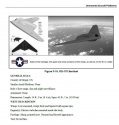Jura The idiot
General
this one is interesting: "... tests also successfully demonstrated a continuous two-way data link between the in-flight projectiles and the ground station over the Dugway Proving Ground open range ..." etc.
General Atomics Successfully Tests Railgun Hypersonic Projectiles
General Atomics Successfully Tests Railgun Hypersonic Projectiles
General Atomics Electromagnetic Systems (GA-EMS) announced in a May 10 release that its hypersonic projectiles with an enhanced Guidance Electronics Unit (GEU) have been successfully tested during multiple firings from the organization’s three megajoule (3 MJ) Blitzer railgun system.
The enhanced GEU containing a new battery configuration and running GA-EMS developed Guidance, Navigation, and Control software, completed testing at launch accelerations over 30,000 gs at the U.S. Army Dugway Proving Ground in Utah.
“We’re continuing to test at an impressive pace, building on the successes over the past year to advance both our Blitzer railgun systems and hypersonic projectile capabilities,” said Nick Bucci, vice president Missile Defense and Space Systems at GA-EMS. “We are on track to conduct another series of tests using the Blitzer 10 MJ railgun system later this year. With each new firing, we continue maturing the technologies and performing risk reduction toward a multimission railgun weapon system that supports future operation on land and at sea.”
The GEU tests also successfully demonstrated a continuous two-way data link between the in-flight projectiles and the ground station over the Dugway Proving Ground open range. In addition to the GEU, a new lightweight composite sabot was tested, demonstrating successful sabot separation and in bore structural integrity at the high acceleration levels.
GA-EMS has internally funded the Blitzer railgun systems and hypersonic projectile development. Blitzer railguns are test assets that include a launcher, high-density pulsed power, and weapon fire control system. GA-EMS recently announced the development and completion of the High Energy Pulsed Power Container (HEPPC) that provides twice the energy density of existing pulsed power systems. The HEPPC is intended to reduce the footprint for pulsed power required to launch projectiles, offering greater flexibility for future Navy and Army railgun applications.






